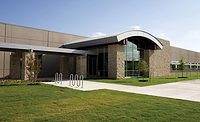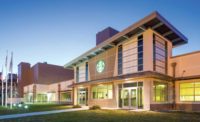Beverage facilities focus on sustainability, energy efficiency
Automation, space utilization important in new facility planning

Whether a manufacturing plant, brewery, distillery, warehouse or distribution facility, or a combination thereof, countless factors should be considered when it comes to designing and operating a plant. Among them, sustainability and carbon footprints are a common thread.
“Conservation continues to be a big topic, especially in the beverage industry,” says Scott Baesler, senior project manager at Stellar, Jacksonville, Fla. “Water usage is a big issue in beverage manufacturing, and although it can be challenging to design a fully ‘green’ beverage plant, many companies today are taking steps toward eco-friendly efficiency. For example, some major soft drink manufacturers have prioritized recycling water from their processing and reusing it for cleaning.”
Portland, Maine-based Woodard & Curran’s Senior Vice President Lloyd Snyder also notes that water usage and wastewater are important environmental factors that should be considered in beverage facility planning, adding that incentives are offered to encourage development.
“Water, wastewater and power are important factors to consider,” Snyder says. “These are infrastructure costs that can add significant cost to the construction of a new facility. To bring these ‘outside services’ to your new facility, significant planning and negotiations are key. Community and state economic development arms are increasingly playing a role in bringing a new facility to a community. Incentive packages can help a company reduce the initial capital requirements.
“Sustainability’s role is being felt increasingly through stakeholder demand for reduced impact on the environment,” he continues. “For instance, greenhouse gases (GHG) can be reduced by increasing energy efficiency and reducing the energy footprint of a facility. In addition, facilities in California and other drought-stricken areas are looking for ways to reduce water footprint through holistic water management programs.”
Yet, sustainable thinking should include a variety of factors, says Andrew Sitton, senior project manager at HDA Architects, St. Louis. He notes that designing an air-tight facility is essential for an ecologically sound facility and adds that acquiring energy-efficient machinery can help decrease a facility’s overall energy usage.
“Sometimes, on the mechanical side of things, going with a better system up front has a lot quicker payback on efficiency,” he says, noting that a more energy-efficient system will pay back in the long term.
Stellar’s Baesler also highlights the use of energy-efficient equipment and building designs. “Mindfulness of sustainability is affecting the kinds of equipment purchased and the way new plants are being designed. Every company is becoming more aware of their carbon footprint and most want to reduce it, even if those ‘green’ initiatives don’t necessarily affect productivity. However, sometimes more eco-friendly technology can translate into savings as well,” he says.
The use of solar power is gaining at beverage facilities looking to maximize their utilization of the space on a building’s roof, HDA’s Sitton explains, noting that cost can still prohibit some from implementing the technology.
“Every project now, we’re looking at solar,” he says. “It all depends on what the local utilities are providing from efficiencies and from a cost payback — we’re looking at local and federal incentives. … Everybody looks at it in every project. They’ve got this big roof and think ‘what do I do with this big roof?’ They can put solar panels on it.”
Growing facilities, adding automation
Although sustainability is an important factor in the decision-making process for all kinds of beverage facilities, it isn’t the only factor playing a role. In line with the desire to utilize the space on the roof, overall space utilization within facilities is gaining in importance, Sitton notes.
“We’re finding that instead of having a one-story space in a large-volume warehouse, [beverage facilities want] to create a two-story space and put their warehouse management up on the second level so they can get a good view of the facility, and that’s good for security and operations,” he says.
Limited facility space also can be maximized by adding racks above overhead doors for additional storage, Sitton says. Additionally, distribution facilities are moving away from drive-thru dock models in favor of drive-in and pull-out layouts in order to utilize less space for loading and unloading, he adds.
As SKU proliferation continues, facilities are expected to increase output, which has resulted in a growth in automation, experts note.
“There are a lot of ways automation can be built into a beverage plant, but one example is a solution I’ve seen a lot recently: installing automated valve assemblies (valve banks) to control SKU recipe execution,” Stellar’s Baesler explains. “This square or rectangular matrix can control the flow of a variety of liquids in a more compact and organized manner compared to traditional flow panels.”
Woodard & Curran’s Snyder highlights that flexibility is essential for beverage operations equipment. “This means equipment manufacturers are using quick changeover techniques and wider use of automated controls, electronic servos and robotics,” he says.
Modularization also is a growing trend when it comes to building these facilities. “This is being widely used in construction due to many benefits to developing a process skid,” he explains. “It allows for construction away from the construction site (lower cost, improved quality and safer process development). It also minimizes [the] startup schedule by allowing more testing and commissioning away from site by having factory acceptance tests.” BI
Looking for a reprint of this article?
From high-res PDFs to custom plaques, order your copy today!







